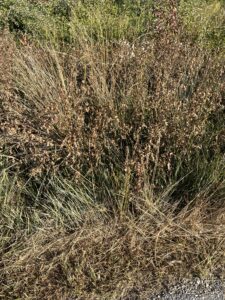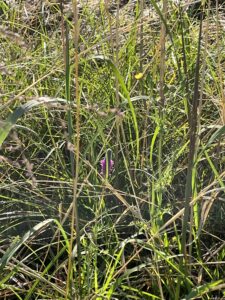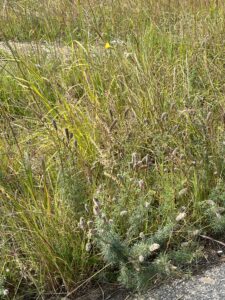1. Identify: Due to its inclusion in my observational data collection, I want to continue with purple prairie clover.
2. Record your observations of the organism or biological property along an environmental gradient in a field journal. Select at least three places along the gradient, and then keep track of any alterations in the distribution, quantity, or nature of your research subject.
I selected three distinct sites along the gradient to conduct my research on purple prairie clover.
-> The first location was the park, where I counted 13–17 purple prairie clover in one gradient (where they were grouped together). The remaining plants were dispersed.
-> Using 5 by 10 pacing, gradient, and various stems that range in height from 5 cm to 35 cm.
-> I observed the species growing away from the swamp. Pollinators are drawn to the colourful blossoms of purple prairie clover (Dalea purpure).
Location #2: The roadside
purple prairie clover found growing well along railroad and it associates with native warm-season grasses like Narrow Reedgrass & Mannagrass. Also, seems intolerant to full shaded. Stems are 40-45cm .tall.
Location #3: The hill prairie species received full sunlight,found cone-shaped flowers, some choked out, orange stems, feather fern-like leaves, and bloomed from the bottom of the cone up. 30-40cm tall
Hypothesis: Research shows pollinators visit the species more frequently in June than August due to overgrazing and flower choke.
Prediction:Competitive



 narrow reedgrass or overgrazing will reduce species,pollinator visits, and some flowers.
narrow reedgrass or overgrazing will reduce species,pollinator visits, and some flowers.
Response: The number of the flowers and pollinators
Explanation: Grasses